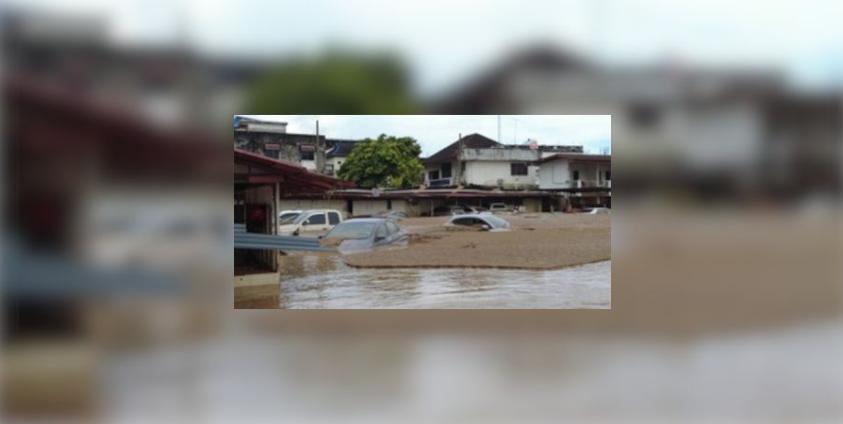Two towns either side of the Sai River, that delineates the border between Myanmar and Thailand, have suffered significant river sediment build up due to excessive mining on the Myanmar side.
On 14 August 2024, torrential rains triggered flooding in Shan State’s Tachileik Town on the Myanmar side and Mae Sai Town in Chiang Rai Province, on the Thai side. While both towns have faced floods in previous years, this year’s event was unprecedented, leaving behind large amounts of sediment after the floodwaters receded.
According to a report on the pollution, by the Shan Human Rights Foundation (SHRF), a Thai government study identified the mining of gold and minerals in eastern Shan State as the cause of the unprecedented mud damage in Mae Sai Town.
The study, conducted in October 2024, by Thailand's Department of Natural Resources, revealed that large-scale gold mining in the upper parts of the Sai River in the eastern part of Mong Hsat District, Shan State, was the cause of the significant sediment buildups. The mining is causing serious environmental degradation in the immediate vicinity of the mines, while run-off from the mines is polluting and clogging nearby rivers, impacting the health and safety of downstream communities, the study suggested.
The Sai River is one of several Mekong tributaries and sub-tributaries in eastern Shan State that have been impacted by expanded mining in recent years.
Ying Leng Harn, a spokesperson for the SHRF said to KIC: “Sediment accumulation has primarily increased due to gold mining activities. Following the floods, significant sediment buildup occurred, negatively affecting the local community. Additionally, chemicals commonly used in gold mining often dissolve into the river water. When people use this water, it can pose health risks, and if used for agriculture, it can harm crops. These impacts are already being felt.”
She also said that pregnant women living near rivers downstream from the mining areas have suffered more miscarriages than would normally be expected and people have suffered other adverse effects from using water from rivers that have flowed through gold mining areas
Scientific testing carried out as part of the Thai government study showed that sediment left on the Sai River bank by the recent flooding showed high levels of heavy metals associated with mining, particularly arsenic, nickel and zinc. The amount of zinc in one sample was found to be 18 times higher than recommended safety levels.
Gold mining activities by armed groups have, over the last two years, become increasingly widespread in the eastern part of Shan State’s Mong Hsat District, on the border with Thailand.
Mining is happening in Mongkan and Naryawng villages and the surrounding areas which are controlled by the United Wa State Army (UWSA) as well as in Maekyoke Village 1 and Maekyoke Village 2 which are under the control the junta and an allied Lahu militia group, the Lahu Democratic Union (LDU), according to Ying Leng Harn.
The junta and the LDU have also set up numerous guard posts near mining operations, according to locals.
SHRF also reported that the Nam Kok River that flows through Mong Hsat District and then on to the northern Thai town of Chiang Rai has been polluted by gold and coal mining in Shan State.








